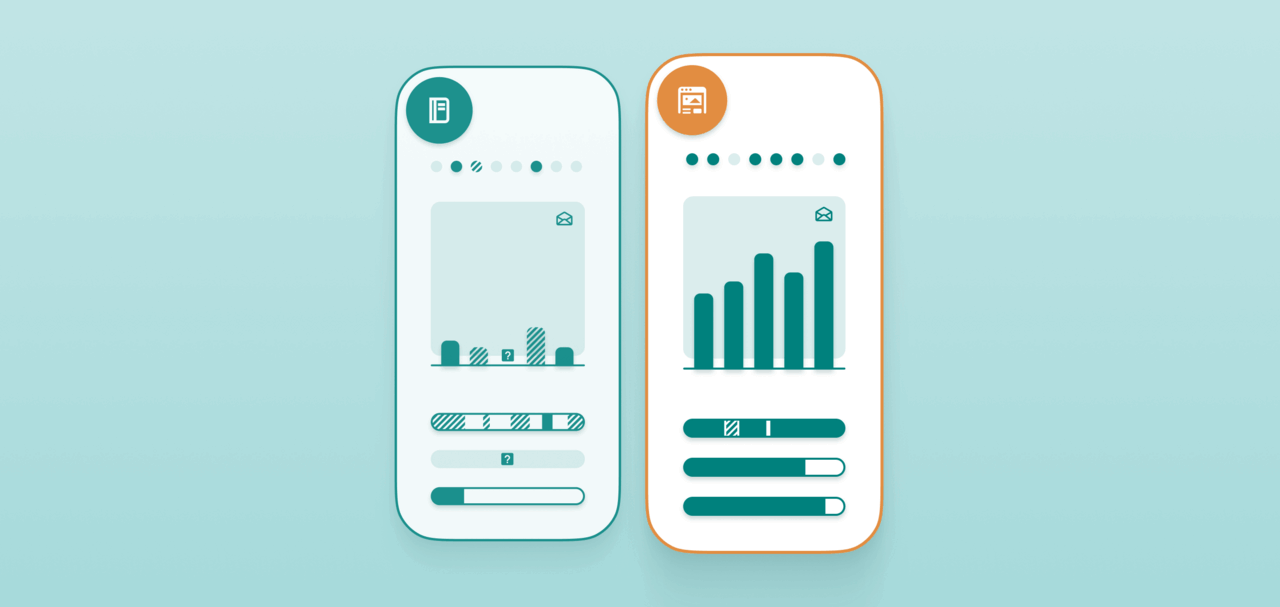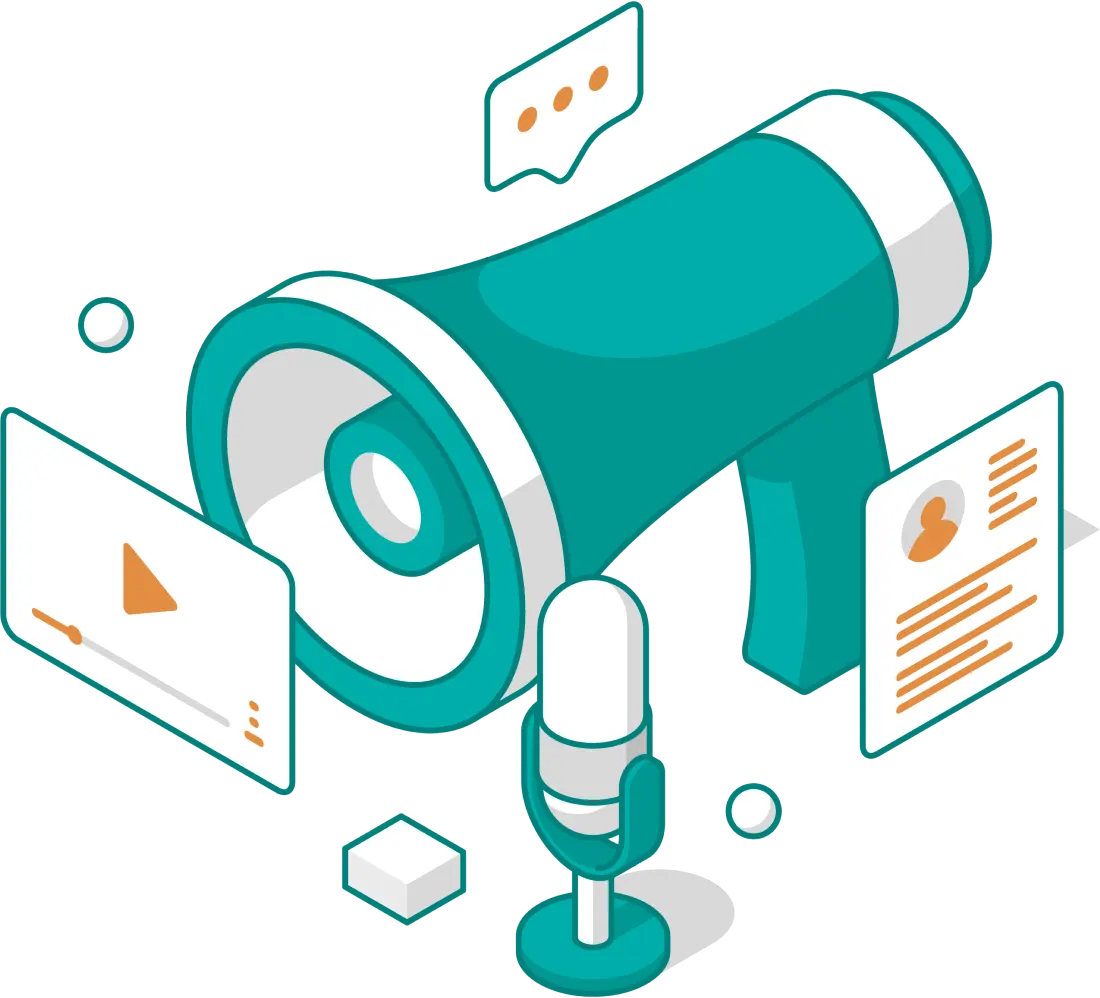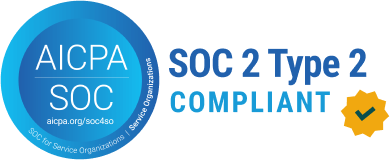
The Visibility Gap Costing Nonprofits Major Gift Opportunities
Insights from a learning session for members of The Woodmark Group on data-driven major donor engagement
My colleague Gideon Rosen and I had the privilege of presenting to development teams from children’s hospitals across the country at a Woodmark Group member webinar. The topic: moving beyond assumptions in major donor engagement.
We expected thoughtful engagement. What we didn’t expect was the overwhelming consensus about where the real challenges lie—and what that reveals about the future of healthcare philanthropy.
The Question Every Development Team Asks
“Are our major donors actually engaging with what we send them?”
It’s the question that keeps advancement professionals up at night. You invest ample amounts of time creating beautiful impact reports and personalized cultivation materials. You send them out. And then… often silence.
Did they read it? Did they throw it away? Did something in that report inspire them, or did they find it boring? You have no idea. And that’s a problem when you’re trying to cultivate six and seven-figure gifts.
The Visibility Gap
During the webinar, we showed a stark comparison between what print communications can tell you versus what digital reveals:
Print leaves you blind to:
- Whether donors actually read your materials
- Which sections resonated or were skipped
- Optimal communication frequency
- Genuine interest versus polite acknowledgment
Digital reveals:
- Time spent and scroll depth on each section
- Content engagement patterns across your portfolio
- Optimal frequency based on actual behavior
- Return visits and cultivation readiness signals
When we asked attendees to describe their biggest challenge with measuring donor engagement in one word, responses clustered around “visibility,” “tools,” and “timeliness.” These challenges all stem from the same root cause: lack of real-time, actionable data about what donors actually care about.
Four Strategies Children’s Hospitals Are Using Right Now
We walked through four proven approaches that leading children’s hospitals are implementing to solve the visibility gap. Each strategy addresses a specific pain point in major donor engagement:
Strategy 1: Replace Guesswork with Meaningful Data
One major children’s hospital worked with a donor who had established a six-figure endowed fund but had gone completely quiet afterward. Multiple gift officers tried to re-engage over several years. The assumption was that the donor had made their major gift and was done.
Then the hospital sent a personalized digital endowment impact report showing exactly what their specific fund had accomplished. The engagement data revealed something surprising: the donor spent over 6 minutes with the report, returned to it twice, and focused heavily on impact stories.
This wasn’t a disengaged donor—it was an interested donor who hadn’t received content that resonated before. Based on that engagement intelligence, the gift officer reached out with a targeted approach focused on student impact stories. That conversation led to a significant additional contribution to the endowment.
The lesson: Stop making assumptions about donor interest and start making decisions based on what donors actually show you.
Strategy 2: Optimize Content Length Based on Engagement Time
A major research university discovered that donors were spending an average of 3.5 minutes with their digital reports, not the 15 minutes they had designed for. Instead of interpreting this as failure, they saw it as intelligence.
They streamlined their content from 12-15 sections down to 5-7 focused sections, ensuring each could be understood in 30-45 seconds. They prioritized visual storytelling over dense text blocks.
The result? Engagement metrics improved, return visits increased, and gift officers reported that donors were referencing specific report content in cultivation conversations. The institution learned that donors want easily skimmable content that respects their time while delivering meaningful impact information.
This strategy tied for most popular among webinar attendees, with participants recognizing that iterative content optimization based on real behavior data could transform their stewardship programs.
Strategy 3: Turn Engagement Signals Into Intelligence
A leading pediatric medical center made assumptions about what content would resonate most with donors. They expected personalized gift impact sections to dominate engagement.
What surprised them? The leadership letter consistently ranked as one of the highest-engagement sections. Donors were spending significant time there—some even returning specifically to re-read leadership messages.
This completely changed their content strategy. They had been treating leadership letters as formalities that didn’t require much investment. Now they approach them as key engagement opportunities, using the insights to guide their broader communication strategy.
The practical application: if a donor shows high engagement with clinical research content, they get invited to research-focused events. If a donor repeatedly engages with patient story content, the gift officer emphasizes family impact in cultivation conversations. Activity data helps prioritize outreach when you can’t give 200 donors equal attention.
Strategy 4: Streamline While Personalizing at Scale
This was the other strategy that tied for most popular—and for good reason. Every development professional faces the same challenge: “We don’t have time to create hundreds of personalized experiences.”
One institution solved this through centralized content with personalized elements. They build a core content library once—leadership messages, key impact stories, research highlights, institutional updates. Then they add personalized layers for each donor: individual giving history, impact specific to what they funded, opportunities aligned with past giving patterns, personalized thank you messages.
The final experience feels completely personalized, but content creation effort is dramatically reduced. Session recording data then reveals which core content resonates across the donor base and which falls flat, allowing continuous optimization.
The result: a robust stewardship program for thousands of donors without requiring a large team.
What the Audience Response Revealed
When we asked which strategy would provide the most value, the results were telling:
Strategy 2 (Adjust content based on behavior) and Strategy 4 (Streamline while personalizing) tied with the most votes. Several attendees noted “all of the above,” suggesting teams are thinking holistically about implementation rather than seeking silver bullets.
This makes perfect sense. Healthcare foundations face intense pressure to do more with less. They need solutions that both improve donor experiences AND increase team capacity. Strategy 2 ensures your content actually works. Strategy 4 ensures you can deliver it at scale.
The clear message: children’s hospital development teams want to work smarter, not just harder.
An Implementation Framework That Works
Drawing from successful implementations across our client base, we shared a six-phase framework for implementing a digital donor communication workflow:
- Phase 1: Assess Current State
Where are you now? What’s working? What isn’t? What are your constraints and opportunities? - Phase 2: Define Success Metrics
Get specific. Not just “better engagement” but “major gift officers have actionable intelligence for 80% of in-person visits.” - Phase 3: Build Business Case
Leadership needs to see both cost savings and revenue opportunities. Organizations typically see 40-50% reduction in report production time and measurable increases in additional gifts after switching from hard-copy to digital reporting. - Phase 4: Evaluate Technologies
Review available platforms. Key considerations include: seamless CRM integration, security and compliance, implementation timeline measured in weeks, not months, proven results with peer institutions, and scalability as you grow. - Phase 5: Implementation
Fast deployment is critical. Extended implementations increase risk and delay value realization. - Phase 6: Reiterate Based on Learnings
This isn’t set-it-and-forget-it. You launch, learn what works, and optimize. The data guides continuous improvement.
From Guesswork to Intelligence
The webinar highlighted a fundamental shift happening in healthcare philanthropy. Development teams are moving from assumption-based cultivation to intelligence-driven engagement.
This shift isn’t about replacing the art of fundraising with cold analytics. It’s about giving gift officers better intelligence so they can have more meaningful conversations. It’s about respecting donor time by delivering content that genuinely resonates. It’s about proving ROI to leadership so stewardship programs get the investment they deserve.
Several key patterns emerged from the successful implementations we shared:
Every organization started by identifying the donor experience problem they needed to solve—not by selecting technology first. They focused on improving donor experiences, not just internal efficiency. They used data to guide relationships, not replace them. They measured results and iterated quickly rather than waiting for perfection. And critically, this approach built team confidence and capacity as gift officers saw what actually worked.
The Path Forward
If you’re a development leader reading this and thinking “this is exactly what we need,” you’re not alone. The webinar attendance and engagement level showed that sophisticated advancement operations are actively seeking solutions to the visibility gap.
The good news: your peers are already implementing these strategies successfully. This isn’t experimental technology or unproven approaches. These are battle-tested strategies delivering measurable results for major healthcare systems and leading academic medical centers.
The question isn’t whether data-driven donor engagement works—the evidence is clear. The question is when your team is ready to move beyond assumptions and start making decisions based on what donors actually show you.
Get the Full Presentation
The webinar was a private session for Woodmark member hospitals, but we’re making the complete slide deck available to development professionals interested in implementing these strategies.
To receive the full presentation PDF including detailed examples, implementation frameworks, and engagement data insights, email me directly at cory.andersen@ovrture.com with “Woodmark Slides” in the subject line.
Want to explore what this could look like for your institution? Schedule a 30-minute demo to discuss your specific challenges and opportunities. We’ll walk through real examples from peer institutions and map out a potential implementation path tailored to your team’s needs.
The development teams that are winning in healthcare philanthropy aren’t working harder—they’re working with better intelligence. It’s time to move beyond assumptions and start building donor relationships informed by what donors actually care about.

CORY ANDERSEN
Account Executive, Business Development
CORY ANDERSEN
Account Executive, Business Development
Cory helps inspire clients to challenge the status quo in how they communicate with key donors and prospects. As a former fundraiser, she believes in the power of donor-centric philanthropy to bring big change to organizations. When she’s not connecting with teams about Ovrture, you can find her on outdoor adventures with her family.
 Back to Updates
Back to Updates
